 By 1881 Little Bay had “a well equipped laboratory and numerous stores for grain, hay, provisions and necessary mining stock [and] large reservoirs capable of supplying any necessary amount of water” but, perhaps of greatest note, was the “ample wharfage [. . .] for the largest vessels afloat, with the finest harbourage in the world” (Harbour Grace Standard). The mining town received yet another famous visitor this year, The Admiral, Sir William Kennedy. Kennedy wrote of his visit describing Little Bay as “a wonderfully snug little port, perfectly landlocked and sheltered from all winds. Large vessels can lie alongside the pier, and two fine steamers were loading copper-ore in bulk at the time of our visit. The company appear to be doing well, judging by the number of steamers which call here for cargoes. The mine is 400 feet deep, and the shaft perpendicular. About 800 men are employed at the works, and the settlement is half a mile from the works, picturesquely situated at the head of the bay” (Kennedy, P. 98). Of the miners he wrote, “the men are obliged to get their provisions [. . .] from the store attached to the establishment, very little cash ever reaches their pockets, I suspect” (Kennedy, P. 99).
By 1881 Little Bay had “a well equipped laboratory and numerous stores for grain, hay, provisions and necessary mining stock [and] large reservoirs capable of supplying any necessary amount of water” but, perhaps of greatest note, was the “ample wharfage [. . .] for the largest vessels afloat, with the finest harbourage in the world” (Harbour Grace Standard). The mining town received yet another famous visitor this year, The Admiral, Sir William Kennedy. Kennedy wrote of his visit describing Little Bay as “a wonderfully snug little port, perfectly landlocked and sheltered from all winds. Large vessels can lie alongside the pier, and two fine steamers were loading copper-ore in bulk at the time of our visit. The company appear to be doing well, judging by the number of steamers which call here for cargoes. The mine is 400 feet deep, and the shaft perpendicular. About 800 men are employed at the works, and the settlement is half a mile from the works, picturesquely situated at the head of the bay” (Kennedy, P. 98). Of the miners he wrote, “the men are obliged to get their provisions [. . .] from the store attached to the establishment, very little cash ever reaches their pockets, I suspect” (Kennedy, P. 99).
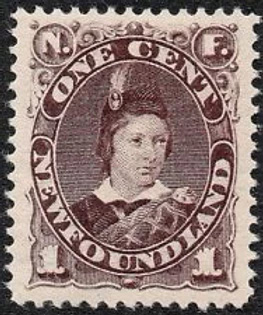 Despite ongoing sentiments like, “Little Bay Mines [. . .] appears to be one of finest copper mines in the world” (The Book of Newfoundland, P. 165) there was a temporary shutdown this year (Moments in Time). It foreshadowed the years to follow. Rev. Whittier reflected, “life at that time was not the easiest in an isolated mining community in Newfoundland. There were many social and educational problems” (Moncrieff). It was into this turbulent environment that John Stewart was hired (Martin). Another new comer this year was the postmaster Richard Walsh (Newfoundland Almanac).
Despite ongoing sentiments like, “Little Bay Mines [. . .] appears to be one of finest copper mines in the world” (The Book of Newfoundland, P. 165) there was a temporary shutdown this year (Moments in Time). It foreshadowed the years to follow. Rev. Whittier reflected, “life at that time was not the easiest in an isolated mining community in Newfoundland. There were many social and educational problems” (Moncrieff). It was into this turbulent environment that John Stewart was hired (Martin). Another new comer this year was the postmaster Richard Walsh (Newfoundland Almanac).
“Transfer of the [Little Bay mines] to The Newfoundland Consolidated Copper Mining Company in [. . .] 1881 came [with] the Newfoundland government’s decision to build a railway from St. John’s” (Martin). The “Bill passed with Government subsidy, authorizing the construction” (Harbour Grace Standard). Rev. Whittier notes that “the mines are passing into the hands of an American company, and in this transition state workmen are being drawn off to work on the Railway” (Moncrieff). The American group “headed by Albert L. Blackman formed the Newfoundland Railway Company [and an] intense wave of publicity broke with the rumour that the people backing the Newfoundland Railway Company also backed The Newfoundland Consolidated Copper Mining Company, and that the Newfoundland government was secretly involved” (Martin). This was a conspiracy between the Newfoundland government and the American interests now represented by the mine. But it gets even juicier.
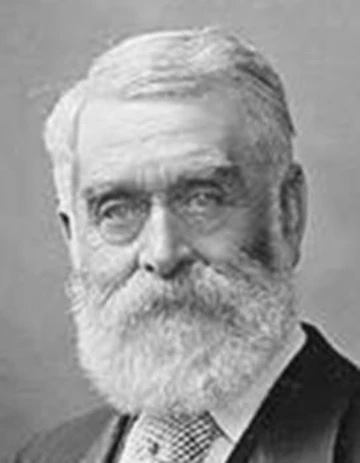 The Evening Telegram exposed it with “concrete evidence [showing] Premier Whiteway [was involved]” (Martin). The press jumped on Whiteway for using “his office to the mining company’s advantage, but [he was also] chairman of the government committee [that was considering] Blackman’s railway proposal [and he] had threatened to resign if [it was rejected] (Martin). The Premier was knees deep in it. Meanwhile, Ellershausan was still scheming, as despite the American involvement, he also had two English capitalist visiting in September and he traveled to England seeking further investors (Evening Telegram). Rev. Whittier started to see “the mine changing hands [to the] English rather than [the] American Company” (Moncrieff). “Ellershausen sailed to England to [secure] Matheson and Company of London [as] creditors and returned [. . .] with members of the Matheson company” (Martin). Ellershausen had “received sufficient advances to [. . .] pay off all liabilities [from the] very wealthy English Mining Company” (Harbour Grace Standard). Just “two weeks later Whiteway arrived from England on the same boat as Blackman amid vehement press accusations that Ellershausen, Whiteway, Blackman and the Mathesons had been [conspiring] in London” (Martin).
The Evening Telegram exposed it with “concrete evidence [showing] Premier Whiteway [was involved]” (Martin). The press jumped on Whiteway for using “his office to the mining company’s advantage, but [he was also] chairman of the government committee [that was considering] Blackman’s railway proposal [and he] had threatened to resign if [it was rejected] (Martin). The Premier was knees deep in it. Meanwhile, Ellershausan was still scheming, as despite the American involvement, he also had two English capitalist visiting in September and he traveled to England seeking further investors (Evening Telegram). Rev. Whittier started to see “the mine changing hands [to the] English rather than [the] American Company” (Moncrieff). “Ellershausen sailed to England to [secure] Matheson and Company of London [as] creditors and returned [. . .] with members of the Matheson company” (Martin). Ellershausen had “received sufficient advances to [. . .] pay off all liabilities [from the] very wealthy English Mining Company” (Harbour Grace Standard). Just “two weeks later Whiteway arrived from England on the same boat as Blackman amid vehement press accusations that Ellershausen, Whiteway, Blackman and the Mathesons had been [conspiring] in London” (Martin).
 The schemes Ellershausen and Whiteway had concocted stretched “into the very ownership of the Little Bay property. Claim records show that Adolph Guzman and a Twillingate doctor, William Stirling, filed the first claim for Little Bay [but] Stirling’s name was replaced by [. . .] Dr. Henry Eales, immediately before the property was transferred” (Martin). The crime here was something called “jumping the claim” as the deposit was on a license held by Guzman and the owners of the claim knew nothing of the find. The plan was to wait them out and claim it when it expired but Ellershausen found out and brought Eales in on it (Howley). This eventually ended up involving the Premier, the Americans, the British, and who knows who else. But between the lies and the forgery and the backroom handshakes some rich people got a whole lot richer and not just from mining, because, remember… who was paying for this railway again? Gasp! My personal opinion is they knew they were building the railroad to nothing too, as they must have been aware of the limited size of the copper deposit in the first place. That didn’t stop Whiteway and Ellershausen from investing in the railway and they had a lot of money riding on both ends of the thing, literally and metaphorically. However, copper finds at Lady Pond in April (Harbour Grace Standard) and high grade ore prospected in September (Twillingate Sun) must be noted.
The schemes Ellershausen and Whiteway had concocted stretched “into the very ownership of the Little Bay property. Claim records show that Adolph Guzman and a Twillingate doctor, William Stirling, filed the first claim for Little Bay [but] Stirling’s name was replaced by [. . .] Dr. Henry Eales, immediately before the property was transferred” (Martin). The crime here was something called “jumping the claim” as the deposit was on a license held by Guzman and the owners of the claim knew nothing of the find. The plan was to wait them out and claim it when it expired but Ellershausen found out and brought Eales in on it (Howley). This eventually ended up involving the Premier, the Americans, the British, and who knows who else. But between the lies and the forgery and the backroom handshakes some rich people got a whole lot richer and not just from mining, because, remember… who was paying for this railway again? Gasp! My personal opinion is they knew they were building the railroad to nothing too, as they must have been aware of the limited size of the copper deposit in the first place. That didn’t stop Whiteway and Ellershausen from investing in the railway and they had a lot of money riding on both ends of the thing, literally and metaphorically. However, copper finds at Lady Pond in April (Harbour Grace Standard) and high grade ore prospected in September (Twillingate Sun) must be noted.
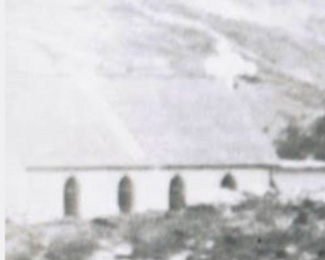 There was a new Catholic church built in town this year but still only one Protestant church. Rev. Whittier noted a lack of religiosity, saying “the superstructure of organized society has yet to take form. People are here to make money, not to become better or to enlighten” (Moncrieff). His tone was no doubt influenced by the fact that “by the middle of 1881, there [were only] a handful of Presbyterians in Little Bay (Moncrieff). It is curious what impact this had, as Prowse described them as “a very influential body, though small in number (Prowse, P. 633). Without them “the majority of the workers and officials were native Newfoundlanders, and thus Roman Catholic, Episcopalian and Methodist” (Moncrieff).
There was a new Catholic church built in town this year but still only one Protestant church. Rev. Whittier noted a lack of religiosity, saying “the superstructure of organized society has yet to take form. People are here to make money, not to become better or to enlighten” (Moncrieff). His tone was no doubt influenced by the fact that “by the middle of 1881, there [were only] a handful of Presbyterians in Little Bay (Moncrieff). It is curious what impact this had, as Prowse described them as “a very influential body, though small in number (Prowse, P. 633). Without them “the majority of the workers and officials were native Newfoundlanders, and thus Roman Catholic, Episcopalian and Methodist” (Moncrieff).
A letter to the Twillingate Sun in April voiced concerns that Twillingate was increasingly overlooked as the steamers running from Little Bay to St. John’s had no room for their cargo. In another outraged letter to the editor on March 5th was written “the mines are favoured with telegraph communication in addition to the best of the steam service” (Twillingate Sun). It must have rubbed salt in the wound when the paper posted a telegraph from England congratulating Little Bay’s mining efforts later that year.
The telegraph office allowed Little Bay to provide international news to the Evening Telegraph’s audience in St. John’s and many of the Evening Telegraphs international news reports were credited as “via Little Bay” during this time. The Telegraph also had a Little Bay corresponded in place. The Telegraph wrote in September “We are happy to be in a position to state, that the Little Bay mine is looking better than ever” on the 8th and “Our good friend in Little Bay will please accept our best thinks for the latest telegraphic information” on the 22nd.
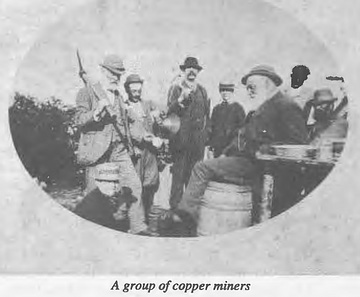 In January Little Bay’s doctor, a Dr. Standford performed surgery on a swan that had been shot at Pilley’s Island. A house fire killed a young boy named Kilson in May and another house was burned by a major fire that threatened the community in June (Twillingate Sun). Admiral Kennedy was present for this event and wrote that “the fire [. . .] approached very near to Little Bay [. . .] The miners dug trenches at the back of their huts – who but a miner would think of such a thing? – to bury their effects should the fire come upon them” (Kennedy, P. 99). In the end the only property lost was owned by the mine management as the trees were not cut near those properties (Harbour Grace Standard). Adolph Guzman and William Kennedy were thanked publicly for their help in rebuilding (Twillingate Sun).
In January Little Bay’s doctor, a Dr. Standford performed surgery on a swan that had been shot at Pilley’s Island. A house fire killed a young boy named Kilson in May and another house was burned by a major fire that threatened the community in June (Twillingate Sun). Admiral Kennedy was present for this event and wrote that “the fire [. . .] approached very near to Little Bay [. . .] The miners dug trenches at the back of their huts – who but a miner would think of such a thing? – to bury their effects should the fire come upon them” (Kennedy, P. 99). In the end the only property lost was owned by the mine management as the trees were not cut near those properties (Harbour Grace Standard). Adolph Guzman and William Kennedy were thanked publicly for their help in rebuilding (Twillingate Sun).
In August there was a death at the mine when a man was crushed by a cart. In September there was an outbreak of the measles and the
Evening Telegraph reported on the valiant efforts of Dr. Standford in fighting the disease. Rev. Whittier must not have been impressed as he wrote the Twillingate Sun in October to voice concerns over the lack of medical facilities, but he didn’t seem too impressed by anything at that point. His flock had left him and there was a shiny new Catholic church in town. Luckily for Whittier he received the call to a church in Halifax not long after that. October witnessed the sad death of a young boy named Oxford who died swimming next to his parent’s schooner (Twillingate Sun). And in December the steamship Merlin from St. John’s got stuck in Harbour Grace by the weather (Harbour Grace Standard). Was there any good news? Glad you asked! How about the biggest social event of the year when mine captain Phillip McVicar’s married Eliza Crane on the 27th of October. It must have been something too as it was reported by both the Sun and the Telegram. So la-te-da!
Sources:
“The Newfoundland Almanac” 1881
“The Evening Telegram” 1881
“Twillingate Sun” 1881
“Harbour Grace Standard” 1881
Kennedy, “Sport, travel, and adventure in Newfoundland and the West Indies” 1885
Prowse, “History of Newfoundland” 1895
Howley, “Reminiscences of the forty-two years of exploration” 1914
“Who’s Who” 1930
Moncrieff, Wilfred M “A History of the Presbyterian Church in Newfoundland” 1966
“The Book of Newfoundland” 1967
Martin, Wendy “Once Upon a Mine” 1983
“Moments in Time” 1994
Residents:
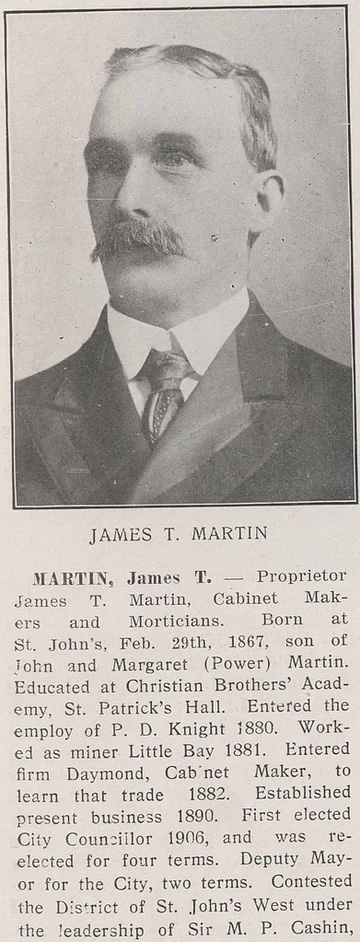 * Baron Franz von Ellershausen – mine management (Martin)
* Baron Franz von Ellershausen – mine management (Martin)
* Adolf Guzman – mine management (Martin)
* John Robert Stewart – mine management (Martin)
* Phillip McVicar – mine captain (Twillingate Sun, 1881)
* Kilson – mine officer (Twillingate Sun, 1881)
* John B. Blandford – magistrate (Twillingate Sun, 1880)
* Richard Walsh – postmaster (Newfoundland Almanac, 1881)
* Rev. Arthur Pittman – Church of England (Moncrieff)
* Rev. Stephen O’Flynn – Catholic Church (Moncrieff)
* Rev. W. Scott Whittier – Presbyterian Church (Moncrieff)
* Dr. Stafford – town surgeon (Twillingate Sun, Sept 1882)
* The Benson family – merchants (Who’s Who / Supreme Court documents)
* The Boyde family – merchants (Supreme Court documents)
* The Head family – miners (Atlantic Guardian, Sept 1948)
* The Bouzane family – tree cutters (Deck’s Awash, Vol. 17 No.5)
* The Oxford family (Twillingate Sun, 1881)
* Eliza Crane (Twillingate Sun, 1881)
* James T. Martin – miner (Who’s Who)
* Patrick Coady – dealer (Supreme Court documents)
* Matthew Dunn – master mariner (Supreme Court documents)
* William D. McDougall (Supreme Court documents)
* Alfred Lindberg – miner (Supreme Court documents)
* John Sharp – merchant (Supreme Court documents)
* John Martin – labourer (Supreme Court documents)
* George Stewart – merchant (Supreme Court documents)
* George Roberts – miner (Supreme Court documents)
* John Donahur – labourer (Supreme Court documents)
* Birth of William G Cook (1921 census)
* Birth of Gerden Moores (1921 census)
* Birth of Thomas J Bouzan (1921 census)
* Birth of James Gillard (1921 census)
* Birth of Ernest Duder (1921 census)
* Birth of Standly W Loveman (1945 census)
* Birth of Anthemas Frederick Barry to Edward and Mary Jane White (Vital Stats, 1753-1893)
* Birth of Lily Ann Goudie to John and Eliza (Vital Stats, 1753-1893)
* Birth of Frederick Bennett to James and Elizabeth (Vital Stats, 1753-1893)
* Birth of John Charles House Helms (Vital Stats, 1753-1893)
* Birth of James William Kenny to Niomas and Louisa (Vital Stats, 1753-1893)
* Birth of Abner Osmond to George Osmond and Victoria (Vital Stats, 1753-1893)
* Birth of James Hustins to William and Jemima (Vital Stats, 1753-1893)
* Birth of Hannah Elizabeth Milley to John Chas and Hannah (Vital Stats, 1753-1893)
* Birth of Georgina Thorne Morgan to William May and Maria Anne (Vital Stats, 1753-1893)
* Birth of Archibald Colbourne to Samuel and Selina (Vital Stats, 1753-1893)
* Birth of Sylvester Gillard to Henry (fisherman) and Lucey Burth (Vital Stats, 1753-1893)
* Birth of Alfred Watson Rideout to Alfred and Sophia (Vital Stats, 1753-1893)
* Birth of William Janes to James (fisherman & miner) and Harriet (Vital Stats, 1753-1893)
* Birth of Susanna Squires to John and Elizabeth (Vital Stats, 1753-1893)
* Birth of Mabel Flora Parsons to Duncan and Ann Eliza (Vital Stats, 1753-1893)
* Birth of Frederick Stafford Crane to John William and Catherine (Vital Stats, 1753-1893)
* Birth of Caroline Bishop to George and Emma (Vital Stats, 1753-1893)
* Birth of Frederick Jacob James to William and Louisa (Vital Stats, 1753-1893)
* Birth of George Lacey Wells to Thomas Edward and Mary Jane (BC Marriage Registrations, 1859-1932)
* Birth of Maurice Wallis to Edward and Annie (Canadian Marriages, 1661-1949)
* Birth of Harriet Cake to John and Susan (Canadian Marriages, 1661-1949)
* Birth of Amelia Weir to William and Charlotta (Massachusetts Marriages, 1841-1915)
* Death of Edward A. Kidston son of A.S. Kidston (Grave in UC cemetery)
